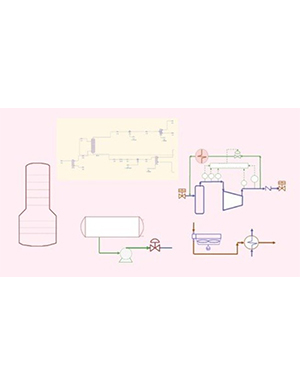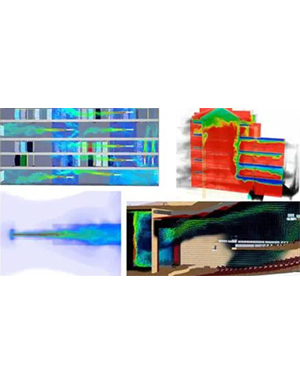Download General Inorganic Chemistry: 14H Course + Solved Problems
General Inorganic Chemistry: 14H Course + Solved Problems udemy video download, Master chemistry atom chemical formulas equations bonding thermochemistry thermodynamics redox electrochemistry kinetics.
What you’ll learn
- Do well in your chemistry course and get higher grades, in case you are in high school, college or university
- Enhance and broaden your chemistry knowledge to do well in your professional career in case you work in a chemistry related industry
- Develop problem-solving skills in precise reading and interpreting chemical problems Learn what an atom is and what it is made of
- Learn how to read and use the periodic table of the elements
- Learn how to calculate the number of moles and molar masses for molecules and compounds
- Learn how to predict the composition of a compound based on its chemical formula and vice versa
- Master the nomenclature of inorganic compounds
- Be an expert in writting and balancing chemical equations
- Master the calculations based on chemical equations like molecular, mass and volume relationships
- Be familiar with the main types of chemical reactions including combustion, replacement, combination, decomposition reactions and many others
- Master the gas laws as predicted by Boyle, Charle and Gay Lussac’s models
- Master Dalton’s law for partial pressures
- Master the ideal gas law
- Be an expert in thermochemistry
- Learn how to predict the enthalpy changes for various processes
- Learn the atomic structure and Bohr’s model for hydrogen
- Learn atomic orbitals and their spatial arrangements
- Learn quantum numbers and what they represent
- Learn how to predict electron configuration for any element from the periodic table
- Learn how the elements bond to form molecules and compounds
- Learn the structure of crystals (simple, face centred and body centred cubic)
- Learn how to perform calculations on lattice and unit cells
- Learn how to write and balance redox reactions
- Learn how to calculate concentrations, molarities, molalities, normalities and other variables of solutions
- Learn to deal with dilution problems
- Learn the basics of titration
- Learn the fundamentals of thermodynamics
- Learn the basics of acids and bases (Arrhenius, Brönsted-Lowry and Lewis concepts, reactions, hydrolysis, buffer solutions, indicators, titration…)
- Learn the basics of solubility and precipitation
- Learn the fundamentals of electrochemistry (Faraday’s law, voltaic cells, couples, Nernst’s equation, electrolysis…)
- Learn the fundamentals of kinetics (rates and orders of reactions, energy of activation and others…)
Course content
- Section 1: ABOUT THE COURSE
- Lecture 1 Promotional video: The course in a glance
- Lecture 2 Learning objectives
- Lecture 3 Example of a solved problem
- Section 2: QUANTITIES AND UNITS
- Lecture 4 System of measurement
- Lecture 5 International system of units
- Lecture 6 Temperature units and scales
- Lecture 7 Use and misuse of units
- Lecture 8-Dimensional analysis
- Lecture 9 Quantities and units: Solved problems
- Section 3: ATOMIC, MOLECULAR AND MOLAR MASSES
- Lecture 10 Atoms
- Lecture 11 Nuclei
- Lecture 12 Periodic table
- Lecture 13 Relative atomic masses
- Lecture 14 Moles
- Lecture 15 Symbols, formulas and molar masses
- Lecture 16 Atomic, molecular and molar masses: Solved problems
- Section 4: FORMULAS AND COMPOSITIONS
- Lecture 17 Empirical formula from composition
- Lecture 18 Composition from formula
- Lecture 19 Nuclidic molecular masses and chemical formulas
- Lecture 20 Formulas and compositions: Solved problems
- Section 5: INORGANIC NOMENCLATURE
- Lecture 21 Introduction to nomenclature
- Lecture 22 Naming binary compounds of nonmetals
- Lecture 23 Naming ionic compounds
- Lecture 24 Naming monoatomic cations
- Lecture 25 Naming polyatomic cations
- Lecture 26 Naming monoatomic anions
- Lecture 27 Naming oxyanions
- Lecture 28 Naming special anions
- Lecture 29 Putting the names of the ions together
- Lecture 30 Writting formulas for ionic compounds
- Lecture 31 Naming inorganic acids
- Lecture 32 Naming acid salts
- Lecture 33 Naming hydrates
- Section 6: CHEMICAL EQUATIONS
- Lecture 34 Introduction to chemical equations
- Lecture 35 Molecular relations from equations
- Lecture 36 Mass relations from equations
- Lecture 37 Limiting reactant
- Lecture 38 Calculations from chemical equations: Solved problems
- Lecture 39 Types of chemical reactions
- Section 7: MEASUREMENT OF GASES
- Lecture 40 Pressure
- Lecture 41 Gas laws
- Lecture 42 Boyle’s law: Constant temperature
- Lecture 43 Charles’ law: Constant pressure
- Lecture 44 Gay-Lussac’s law: Constant volume
- Lecture 45 Combined gas law
- Lecture 46 Density of an ideal gas
- Lecture 47 Dalton’s law for partial pressures
- Lecture 48 Collecting a gas over a liquid
- Lecture 49 Deviation from ideal behavior
- Lecture 50 Measurement of gases: Solved problems
- Section 8: THE IDEAL GAS LAW
- Lecture 51 Avogadro’s hypothesis
- Lecture 52 Molar volume
- Lecture 53 Ideal gas law
- Lecture 54 Gas volume relations from equations
- Lecture 55 Gas stoichiometry involving mass
- Lecture 56 The ideal gas law: Solved problems
- Section 9: THERMOCHEMISTRY
- Lecture 57 Heat
- Lecture 58 Energy and enthalpy
- Lecture 59 Enthalpy changes for various processes
- Lecture 60 Rules of thermochemistry
- Lecture 61 Thermochemistry: Solved problems
- Section 10: ATOMIC STRUCTURE
- Lecture 62 Characters of light
- Lecture 63 Interaction of light with matter
- Lecture 64 Particles and waves
- Lecture 65 Orbitals
- Lecture 66 The Pauli exclusion principle
- Lecture 67 Aufbau principle
- Lecture 68 Electron configuration
- Lecture 69 Atomic radii
- Lecture 70 Ionization energies
- Lecture 71 Electron affinity and magnetic properties
- Lecture 72 Atomic structure: Solved problems
- Section 11: CHEMICAL BONDING AND MOLECULAR STRUCTURE
- Lecture 73 Introduction to chemical bonding
- Lecture 74 Octet rule
- Lecture 75 Ionic bonding
- Lecture 76 Electron dot notation
- Lecture 77 Covalent bonding
- Lecture 78 Distinction between ionic and covalent bonding
- Lecture 79 Predicting the nature of bonding in compounds
- Lecture 80 Formal charges
- Lecture 81 Dipole moment and electronegativity
- Lecture 82 Hybrid orbitals
- Section 12: SOLIDS AND LIQUIDS
- Lecture 83 Crystals
- Lecture 84 Close packing
- Lecture 85 Crystal forces
- Lecture 86 Liquid forces
- Lecture 87 Solids and liquids: Solved problems
- Section 13: OXIDATION – REDUCTION
- Lecture 88 Introduction to redox reactions
- Lecture 89 Oxidation number
- Lecture 90 Oxidizing and reducing agents
- Lecture 91 Ionic notation for equations
- Lecture 92 Balancing oxidation-reduction equations
- Lecture 93 Oxidation-reduction: Solved problems
- Section 14: CONCENTRATION OF SOLUTIONS
- Lecture 94 Composition of solutions
- Lecture 95 Concentrations
- Lecture 96 Molarity
- Lecture 97 Normality
- Lecture 98 Molality
- Lecture 99 Mole fraction
- Lecture 100 Comparison and summary of concentration units
- Lecture 101 Dilution problems
- Lecture 102 Concentration of solutions: Solved problems
- Section 15: REACTION INVOLVING STANDARD SOLUTIONS
- Lecture 103 Reaction involving standard solutions
- Lecture 104 Reaction involving standard solutions: Solved problems
- Section 16: PROPERTIES OF SOLUTIONS
- Lecture 105 Introduction to chemical solutions
- Lecture 106 Vapor pressure lowering
- Lecture 107 Freezing point lowering
- Lecture 108 Boiling point elevation
- Lecture 109 Osmotic pressure
- Lecture 110 Solution of gases in liquids
- Lecture 111 Law of distribution
- Lecture 112 Properties of solutions: Solved problems
- Section 17: THERMODYNAMICS
- Lecture 113 The first law
- Lecture 114 The second law
- Lecture 115 Entropy
- Lecture 116 The third law
- Lecture 117 Standard states
- Lecture 118 Chemical equilibrium
- Lecture 119 The equilibrium constant
- Lecture 120 Le Chatelier’s principle
- Lecture 121 Thermodynamics: Solved problems
- Section 18: ACIDS AND BASES
- Lecture 122 Arrhenius concept
- Lecture 123 Brönsted-Lowry concept
- Lecture 124 Lewis concept
- Lecture 125 Ionization of water
- Lecture 126 Hydrolysis
- Lecture 127 Buffer solutions
- Lecture 128 Indicators
- Lecture 129 Polytropic acids
- Lecture 130 Titration
- Lecture 131 Acids and bases: Solved problems
- Section 19: COMPLEX IONS AND PRECIPITATES
- Lecture 132 Coordination complexes
- Lecture 133 Solubility product
- Lecture 134 Precipitation
- Lecture 135 Complex ions and precipitates: Solved problems
- Section 20: ELECTROCHEMISTRY
- Lecture 136 Electrical units
- Lecture 137 Faraday’s laws
- Lecture 138 Voltaic cells
- Lecture 139 Standard half-cell potential
- Lecture 140 Combining couples
- Lecture 141 Free energy and Nernst equation
- Lecture 142 Electrolysis
- Lecture 143 Electrochemistry: Solved problems
- Section 21: RATES OF REACTIONS
- Lecture 144 Introduction to chemical kinetics
- Lecture 145 Rate constants and order of reactions
- Lecture 146 First order reactions
- Lecture 147 Other rate laws
- Lecture 148 Energy of activation
- Lecture 149 Mechanism of reaction: Molecularity
- Lecture 150 Mechanism of reaction: Energetics
- Lecture 151 Rates of reactions: Solved problems
- Lecture 152 Bonus
Who this course is for:
- Current chemistry students, or students about to start chemistry who are looking to get ahead
- Homeschooling parents looking for extra support with chemistry
Chemists - Chemical engineers
- Professionals working in chemical, petrochemicals, pharmaceuticals, cosmetics, oil and gas industries
- Anyone who seeks to broaden the sphere of his knowledge and discover the fascinating world of chemistry
- Anyone who wants to study chemistry for fun after being away from school for a while
Course details
- Video quality: MP4 | Video: h264, 1280 × 720
- Audio quality: Audio: AAC, 44.1 KHz, 2 Ch
- Video duration: 14h 39m
- Last updated 11/2022
- Number of lessons: 22 sections 152 lectures
- Language: English
- Compressed file size: 1.8 GB
 Discount code: BlackFriday Sale ends in
Discount code: BlackFriday Sale ends in 



